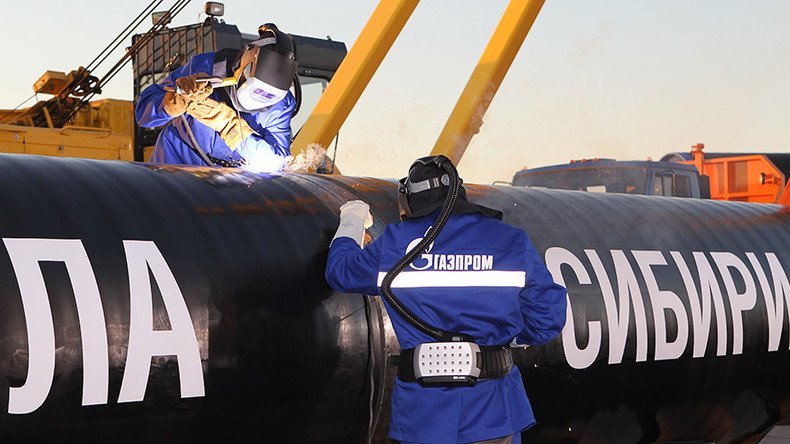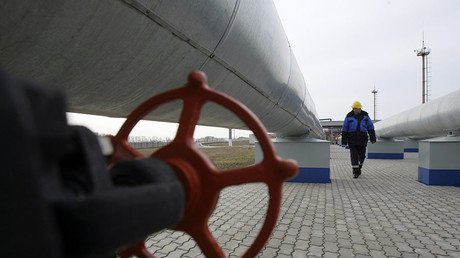Large section of Russian gas pipeline to China completed

More than 1,095 kilometers (km) of the eastern route or the Power of Siberia gas pipeline is now built, according to the Russian energy major Gazprom which added that construction is ahead of schedule.
The company plans to build 1,300 km of the 3,000 km long pipeline to deliver Russian gas to China by the end of the year.
“As of today, over 1,095 kilometers of the pipeline are already built, which is 50.7 percent of the total length of its priority section from the Chayandinskoye field to Blagoveshchensk,” said Gazprom.
The Power of Siberia’s first section will run some 2,200 kilometers from the Chayandinskoye field (Yakutia) to Blagoveshchensk (Chinese border). The second phase of the project will include the construction of a section stretching for about 800 kilometers from the Kovyktinskoye field (Irkutsk Region) to the Chayandinskoye field. The third stage provides for expanding gas transmission capacity between the Chayandinskoye field and Blagoveshchensk.
Current work includes drilling gas wells, the construction of a comprehensive gas treatment unit and infrastructure facilities, and follow-up exploration of the oil rim.
The Power of Siberia pipeline is one of the biggest projects involving Russia and China. The deal took more than a decade to negotiate. In July, Gazprom and the China National Petroleum Corporation (CNPC) inked an agreement to start gas deliveries via the eastern route.
Gazprom's Power of Siberia-2 pipeline to China getting closer https://t.co/iBp8xe20bt
— RT (@RT_com) September 21, 2017
In May 2014, the two companies signed a $400 billion 30-year framework to deliver 38 billion cubic meters of Russian gas to China annually.
Moscow and Beijing plan to build another pipeline - Power of Siberia-2 or the western route that will deliver another 30 billion cubic meters of Russian natural gas.
According to the head of Gazprom Aleksey Miller, China’s growing gas consumption was more than 200 billion cubic meters last year and is expected to reach 300 billion cubic meters soon.













